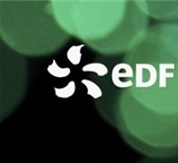Who is willing to buy an electric vehicle in France? Electric vehicle penetration split by household segments
Résumé
Although electric vehicles (that is to say battery electric vehicles (BEV) and plug-in hybrid vehicles (PHEV) economic interest seems already acquired for some mobility needs, EV adoption by households still raises questions.This paper examines EV diffusion in France taking into account monetary and non-monetary drivers. Barriers to this diffusion are examined based on a discrete choice experiment among 12,000 future vehicle buyers in France. Willingness to pay (WTP) for autonomy, charging time, charging point density and EV specific criteria were calculated for different household types distinguished by standard of living, annual mileage and charging point installation facility at home. Then these non-monetary attributes were included to a traditional investment behaviour model based on a total cost of ownership (TCO) calculation to estimate EV market share. This paper examines which type of household segments are likely to buy EV at different time horizons. It shows that it is essential to take into account non-monetary attributes to correctly simulate EV diffusion. Indeed, even though, in the near future, BEV TCO will be lower than internal combustion vehicle (ICV) TCO, the probability that a purchaser will not buy a BEV could also be influenced by non-monetary constraints such as autonomy or time to refuel. By taking into account non-monetary attributes, we can assume that BEV diffusion should not be as fast as expected by analyses that only rely on monetary attributes. In an EVfriendly scenario, we found that BEV buyers from 2020 to 2025 are likely to be households with either low income or with limited annual mileage. Around 2025, these people are likely to buy 30 or 40 kWh BEV since BEV TCO shall be cheaper and they are ready to have autonomy constraints. Then, in 2030, high income and long distance drivers are likely to buy PHEV in order to avoid autonomy constraints whereas medium income and long distance drivers should prefer 80 kWh BEV which is a good compromise between cost and autonomy. This article also shows that BEV should spread faster for large and medium vehicles than for small vehicles. In particular, without ban, a significant proportion of people having a small car, with medium or high revenue and small or average rider in 2040 is still expected to buy small ICV. Finally, this paper highlights that people who have no easy access to charge at their homes are more reluctant to buy BEV.

